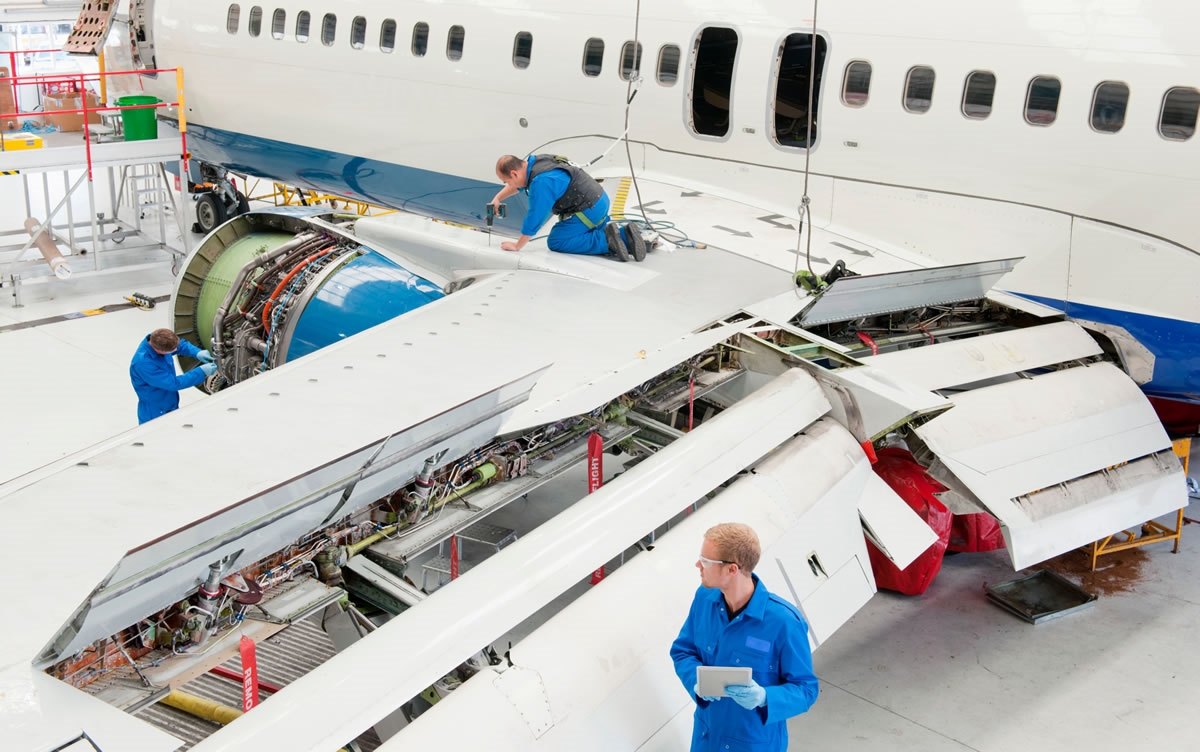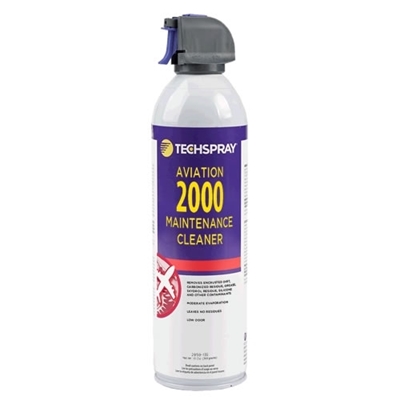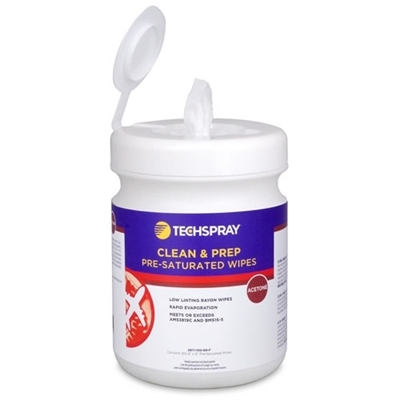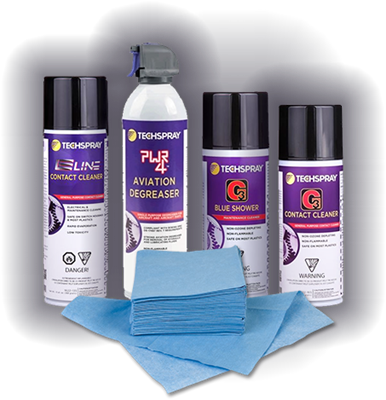There are few things more unsightly than finding grease smudged all over your wing, especially on your flaps and ailerons. Not only does it look bad, but it can permanently tarnish your paint finish. But where does the grease come from? And is it only a cosmetic issue, or are there issues beyond tarnished paint that will arise from wings with caked grease? Finally, what can you do to keep the grease at bay instead of splattered on your wings? Let’s dig into this grimy topic and see what we can do about making it a little less of a problem.
Aircraft Wash Cycles
When we think of the overall health of an aircraft, we tend to think of the obvious points like engines, rotors, transmissions, and avionics. These are obvious and their importance cannot be overstated.
However, just like our bodies, the skin is the largest 'organ' on the aircraft's body and is susceptible to harm from corrosion. Therefore, aircraft wash cycles are the premier preventative maintenance for this essential structural component of the aircraft.
But the aircraft wash cycle is not just about the skin. During aircraft washes, all critical areas receive an extensive scrubbing to cut built-up grease, grime, and deposits of the various scales and scuzz that clings to machines.
Different Cycles For Different Regions
There are no specific wash cycles for airplanes because all regions are different. For example, areas with high humidity and high wind with sand are murderous on aircraft. In areas that are subject to sand storms (such as the southwest), MROs need to closely monitor their wash cycles because sand is a detrimental factor to aircraft components. Figure one illustrates the areas in the U.S. where operators need to consider a faster wash cycle to deal with excessive dust production.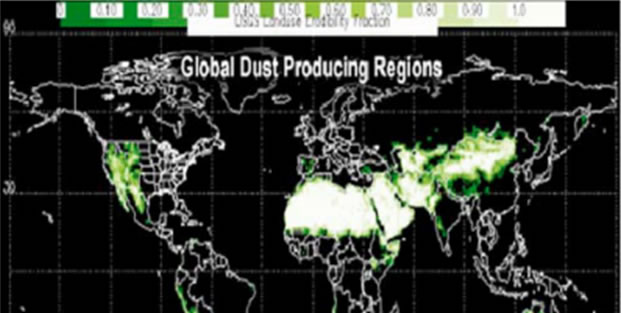
Figure 1 Courtesy of the U.S. Geological Survey
This cycle is especially true for components that use greases and lubricants for smooth movement. These would be the tracks for flaps and slats and any hydraulic actuators on the wing assembly.
Hubs and home bases for aircraft where salt is frequently used as a de-icing agent on the pavement may also require more frequent cleaning. Wings are very susceptible to corrosion from ground salt; the flaps are usually fully extended on landing rollout and the salt will spray all over those surfaces.
The Saltwater Effect
The corrosive reaction in seawater is one thousand times that of distilled water; distilled water lacks ions, and seawater has a surplus. Therefore, operators must routinely wash aircraft in a coastal area to ensure the salt is blasted and scrubbed off the surface and not allowed to iodize. The U.S. Air Force requires aircraft located in regions with salty sea air to wash their fleet three to four times as often as centrally located aircraft.
Corrosion Points On Wings
The wings might not strike you as high corrosion areas of the airframe but they are. Wings are formidable structures that carry enormous weight and bear the brunt of the abuse. Also, wings possess some of the most corrosion-sensitive components on the aircraft.
Aileron Hinges
All ailerons are attached to the wing-body by piano hinges. They work great and require little maintenance, but hinges are corrosion-prone areas.
Excessive corrosion in the hinges is because of dissimilar metal types in constant contact with each other. This contact results in wear to the protective coatings. Also, hinges trap salt, dirt, moisture, and especially fine sand. When you add these catalysts up, you have a high risk for corrosion, and it is a sensitive area because the piano hinges are the only connection between the aileron and the wing. Aileron failure is catastrophic to aircraft directional control, so don't ignore these.
An aerosol-based degreaser is the best way to clean out all the crevices in piano hinges and get the dirt, sand, and moisture out of them.
Flap & Slat Tracks and Recesses
The flap and slat tracks are lubricated to ensure rollers travel smoothly up and down them. However, the grease often gets caked and filled with dirt and grime.
Grease can become corrosive after being permeated with water, salt, and other contaminants. Grease is a double-edged sword; it must be used to lubricate all machinery, but it also must be replaced or becomes detrimental. This means removing all old grease from flap and slat tracks. Also, it tends to build up in the flap recess areas, which hide it from view. The airstream pushes grease out of the tracks and cakes the recess areas, and that old grease can become corrosive and damage skin and rivet heads in the recesses.
Tracks and recesses benefit from aerosol degreasers to quickly blast off built-up grease and also cleaning & prep wipes for finish work in the tracks to make sure it is all removed.
Hydraulic Spoiler Actuators
Some aircraft have opted for spoilers, which sometimes double as speed brakes rather than using bi-directional ailerons for roll control. These rely on hydraulic actuators to push the spoiler up into the airstream. Unfortunately, the chrome on actuators is practically a magnet for dirt and grime buildup, a situation that must be addressed. Dirt and sand can cause the seals in an actuator to roll, damaging or even destroying the actuator in the process.
Control Cables
Control cables are the heart and soul of the aircraft control system, and they can also be a weak link for corrosion-susceptibility. Corrosion will eventually cause cable failure if it’s not repaired. Aircraft flight control cables are wrapped in a durable CPC coating, but with age, it starts to crack and peel.
When the cables peel, dirt and grime work their way into the strands and will eventually rust. The best way to mitigate corrosion on control cables is to keep the cable wiped down and inspected thoroughly at the recommended intervals.
There are a lot of areas in the wings that are heavily greased and, subsequently, heavily soiled. Fortunately, there are products well suited to degreasing the critical areas of the wings. Grease stains are not only unsightly but are also traps for grime, dirt, and water that cause corrosion. Taking the time between scheduled wash cycles to clean off excessive grease will go a long way to making an aircraft sightlier and promoting the overall health of the wing assembly.
Techspray Aviation Degreasers
Techspray's Aviation MRO line breaks new ground in safety and performance for precision solvent cleaning, aircraft component degreasing, contact cleaning, and avionics repair.
Our R&D team works one-on-one with aircraft manufacturers and major aviation maintenance, overhaul, and repair facilities (MRO) to identify the root cause of their challenges and develop safer products that meet performance and compliance requirements.
PWR-4 Aviation Degreaser, G3 Blue Shower Maintenance Cleaner, and G3 Contact Cleaner are all approved under Boeing spec D6-17487 rev. P for paint softening, hydrogen embrittlement, stress crazing, and other aviation specific requirements. Aviation Degreaser II qualifies under NESHAP VOC requirements 63.741-753.
For more information, contact your Techspray application specialist at 678-819-1408 or info@itwcce.com.
References
Robins, Air Force. (2020) “Technical Manual: Cleaning and Corrosion Prevention and Control, Aerospace and Non-Aerospace Equipment.” To 1-1-691. https://www.robins.af.mil/Portals/59/documents/technicalorders/1-1-691.pdf?ver=2017-08-31-145004-663×tamp=1504205650382 Accessed March 2022.

